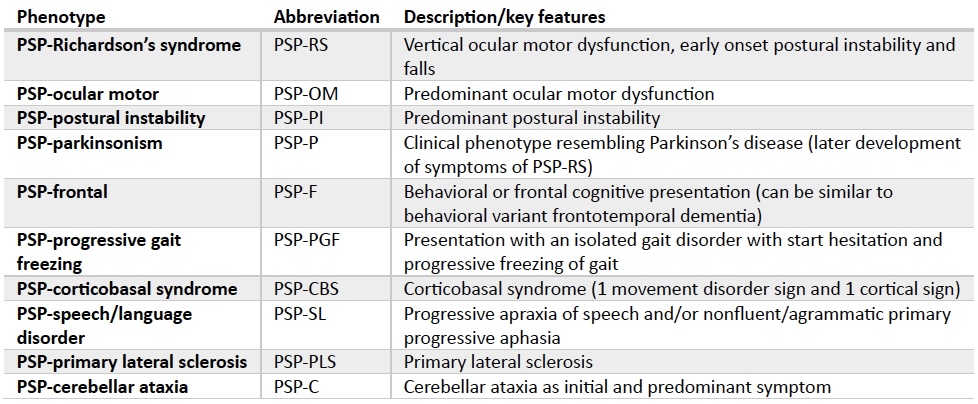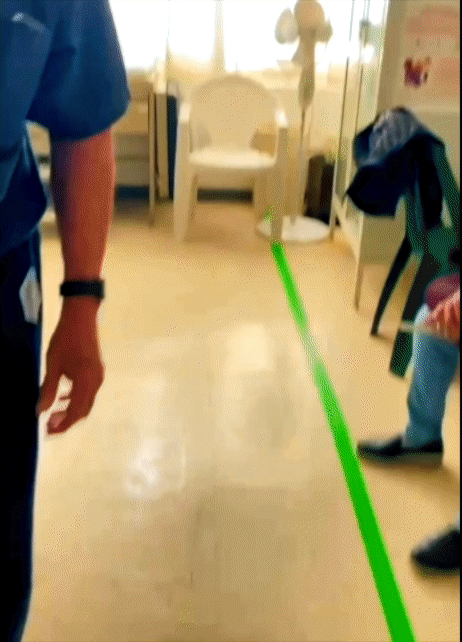Category: Parkinsonism, Atypical: PSP, CBD
Objective: Report a case of progressive freezing of gait diagnosed as a Possible Progressive Supranuclear Palsy phenotype Progressive Gait Freezing.
Background: PSP is the most common disorder of tau protein aggregation, with a prevalence of 5.5 persons per 100,000, mean onset age of 63 yo. Clinical manifestations with disproportionate postural instability, frontal behavioral and cognitive changes, vertical gaze palsy and disabling brainstem deficits. Initially described phenotype is only one of many clinical phenotypes associated with PSP pathology. Clinical diagnosis of PSP should be entertained in individuals ³40 yo with sporadic and gradual clinical onset associated with PSP [table 1]. MRI may include atrophy and also characteristic signs. Treatment remains symptomatic and supportive, for motor symptoms levodopa (LD) is generally tried.
Method: A 77 yo mestizo mexican man originally from Mexico City with a history of his father with PD. Started at 70 yo with gait and postural disturbances, REM sleep behavior disorder and hypomimia with no LD response. 2 years later with freezing of gait. Clinical evaluation with decrease in blinking frequency, dysphagia, mild rigidity, tremor, decreased range of foot movement, freezing and frequent falls [image 1]. Treated with LD with no improvement.
Results: PSP-Rating Scale 16 points. Cognitive evaluation with mild cognitive impairment. MRI with mild global atrophy of frontal and temper-parietal predominance. SPECT with no areas of lower activity of the radiotrazer are observed. Diagnosis of Possible PSP-PGF based on MDS-PSP 2017 criteria.
Conclusion: The diagnosis of PSP and its phenotypes is difficult, due to the particular characteristics of each one, this pathology shows us how heterogeneous Movement Disorders are and that they represent a diagnostic challenge. Unfortunately, there is no treatment and potentially disease-modifying therapies have failed to demonstrate efficacy in people with suspected PSP. To date, physical rehabilitation remains the main palliative treatment for the disease.
Clinical phenotypes associated with PSP pathology
Figure 1. Walking disturbances
References: Armstrong MJ. Progressive Supranuclear Palsy: an Update. Curr Neurol Neurosci Rep. 2018 Feb 17;18(3):12. doi: 10.1007/s11910-018-0819-5. PMID: 29455271.
To cite this abstract in AMA style:
H. Pacheco Mendoza, L. Nuñez Orozco, A. Negrete Gomez, J. Delgado Uriarte, C. Gómez Rubio. Progressive freezing of gait in atypical parkinsonism. A Possible Progressive Supranuclear Palsy phenotype. [abstract]. Mov Disord. 2024; 39 (suppl 1). https://www.mdsabstracts.org/abstract/progressive-freezing-of-gait-in-atypical-parkinsonism-a-possible-progressive-supranuclear-palsy-phenotype/. Accessed March 31, 2025.« Back to 2024 International Congress
MDS Abstracts - https://www.mdsabstracts.org/abstract/progressive-freezing-of-gait-in-atypical-parkinsonism-a-possible-progressive-supranuclear-palsy-phenotype/


